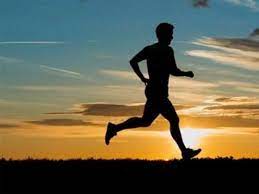Getting up early in the morning and exercising
The secret to staying healthy lies in a healthy lifestyle and exercise is an important and fundamental part of it. So exercising is extremely beneficial for the human body as a whole, but the benefits of exercising early in the morning Some time ago, health experts believed that exercising properly at any time of the day was beneficial for health. However, according to a recent study conducted in Australia, in addition to exercising for half an hour in the morning, if working throughout the day. Taking short walks as part of your routine can help keep your blood pressure at a balanced level.
Research published in the Journal of Hypertension found that women who have to sit in one place for several hours at work should take a three-minute walk at least two to three times a day. Get in the habit.
This procedure is especially effective for older women who are obese or gaining weight.
According to Michael Wheeler, lead author of the study at the Baker Heart and Diabetes Institute in Melbourne, Australia, if we look at the current lifestyle, most of our time is spent on office work, housework and travel. It goes without saying that it would not be wrong to say that a comfortable lifestyle has become a part of our routine.
Recent studies have shown that sitting for most of the day plays an important role in increasing the chances of high blood pressure, which is one of the leading causes of heart disease.
Older people, especially those with heart disease and high blood pressure, spend most of the day sitting.
While it is beneficial to take breaks from exercise or constant sitting, Wheeler and his colleagues at the same time wanted to examine the effects of these two activities on whether the practice yielded additional benefits. The results showed that those in the group who took a break from morning exercise or continuous sitting during this process had an average drop in blood pressure level of up to 1mm / Hg, compared to half an hour of morning exercise. At the same time, there were significant positive changes in the health of those who took a 3-minute walk break during the continuous sitting process throughout the day, but these additional benefits were more noticeable in women than in men.
"It was an amazing experience for us that the process of taking a break from constant sitting along with exercise showed an additional reduction in women's blood pressure," Wheeler said.
It is hoped that the scope of other future studies and investigations will be broader, focusing on changes in blood pressure based on gender as a whole.
Researchers from the University of Nevada, Los Vegas, believe that gender differences may be helpful in understanding the causes of blood pressure and heart disease. He added that future research will focus on tissue functions and glucose regulation. Factors will help lower blood pressure in men and women, as well as ideal times for exercise and breaks will play an important role in this process.


1 Comments
Thanks for pointing me to Health
ReplyDeleteYou should not use spam word in comments